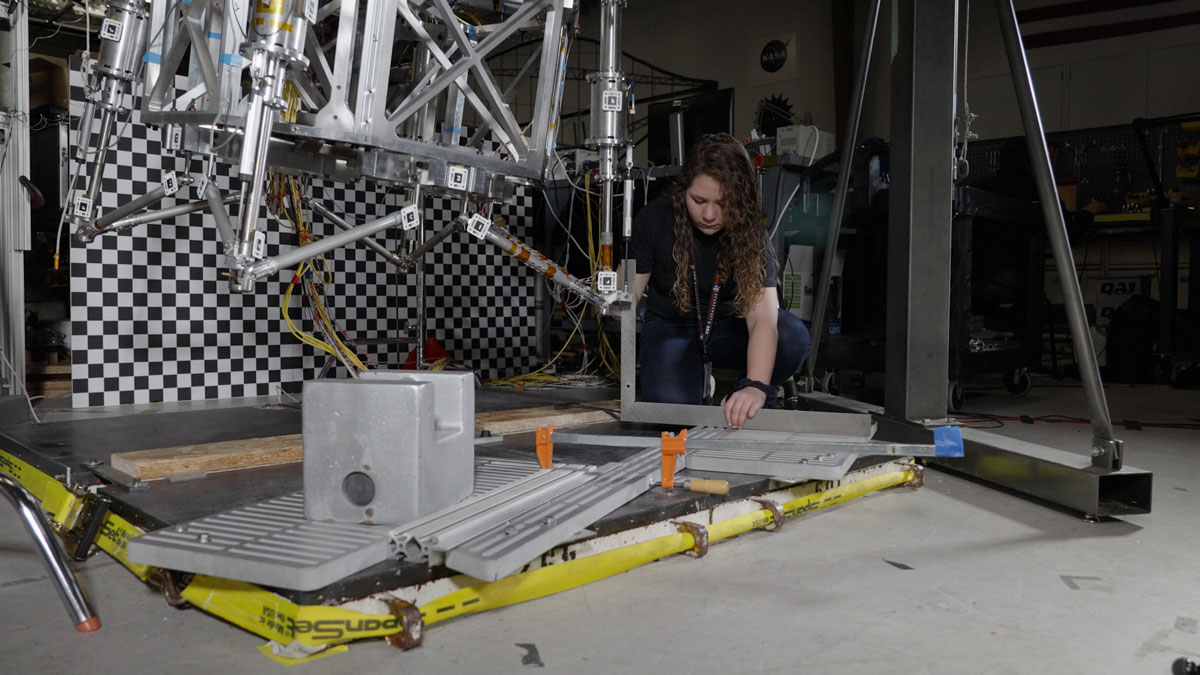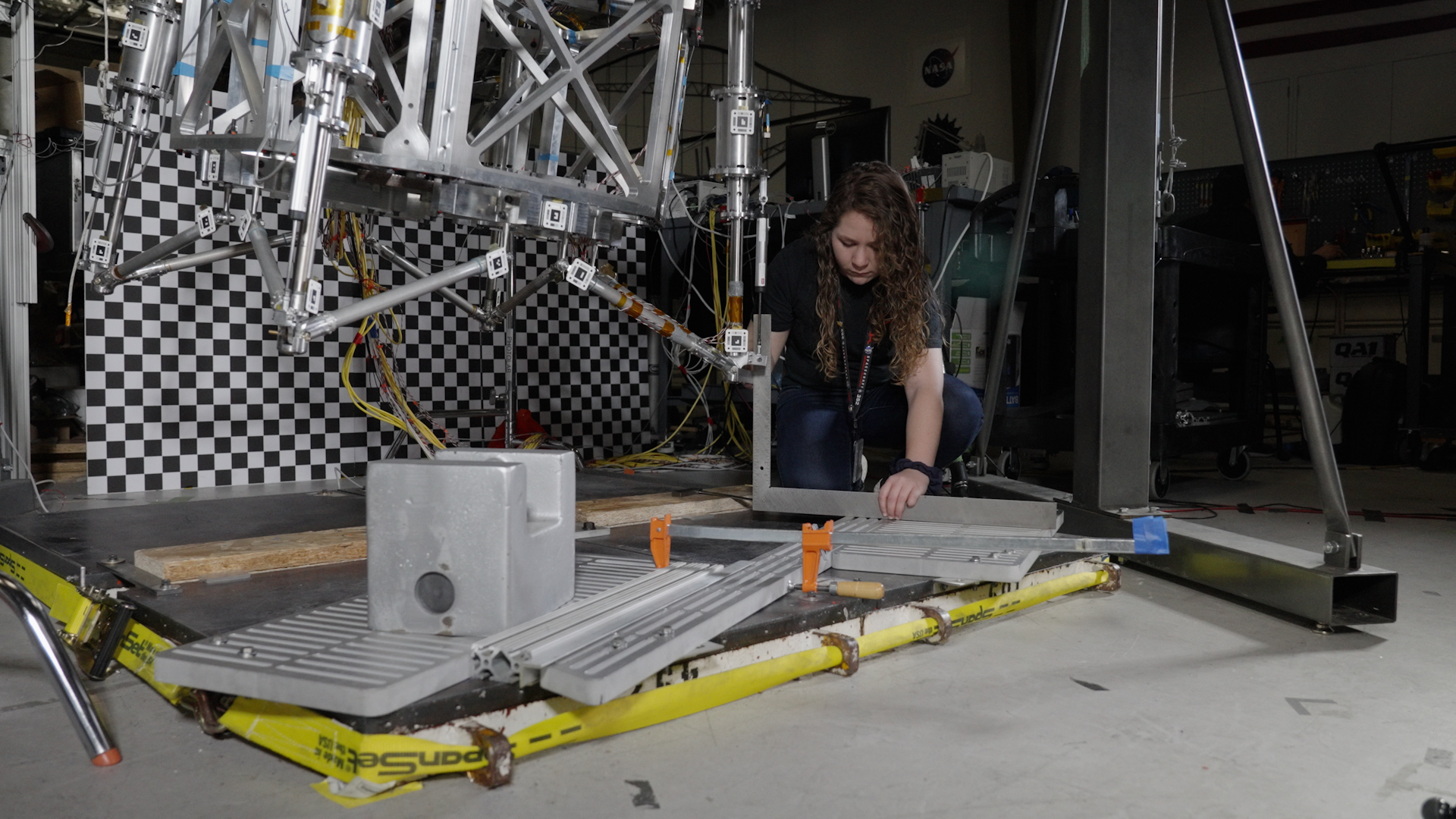Setting Guardrails for Mars Lander Testing

| Credit | NASA/JPL-Caltech |
|---|---|
| Language |
|
Morgan Montalvo, an engineer at NASA’s Jet Propulsion Laboratory, sets guardrails on the floor below a prototype of the lander being designed for the Mars Sample Return campaign. These guardrails were used to test a scenario where the lander would “stub a toe” against a rock while touching down on Mars.
The Sample Retrieval Lander, estimated to weigh as much as 5,016 pounds (2,275 kilograms), would be the heaviest spacecraft ever to land on the Red Planet. To study the physics involved in landing such a massive spacecraft, engineers have been testing a lander prototype that’s about one-third the size it would be on Mars.
Mars Sample Return will revolutionize our understanding of Mars by bringing scientifically selected samples to Earth for study using the most sophisticated instrumentation around the world. NASA’s planned Mars Sample Return (MSR) campaign would fulfill one of the highest priority solar system exploration goals identified by the National Academies of Sciences, Engineering and Medicine in the past three decadal surveys. This strategic partnership with the ESA (European Space Agency) features the first mission to return samples from another planet, including the first launch from the surface of another planet. The samples being collected by NASA’s Perseverance rover during its exploration of an ancient river delta are thought to be the best opportunity to reveal the early evolution of Mars, including the potential for ancient life.
For more about Mars Sample Return: https://mars.nasa.gov/msr/

